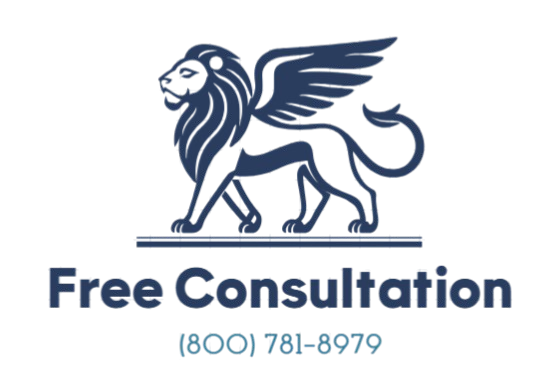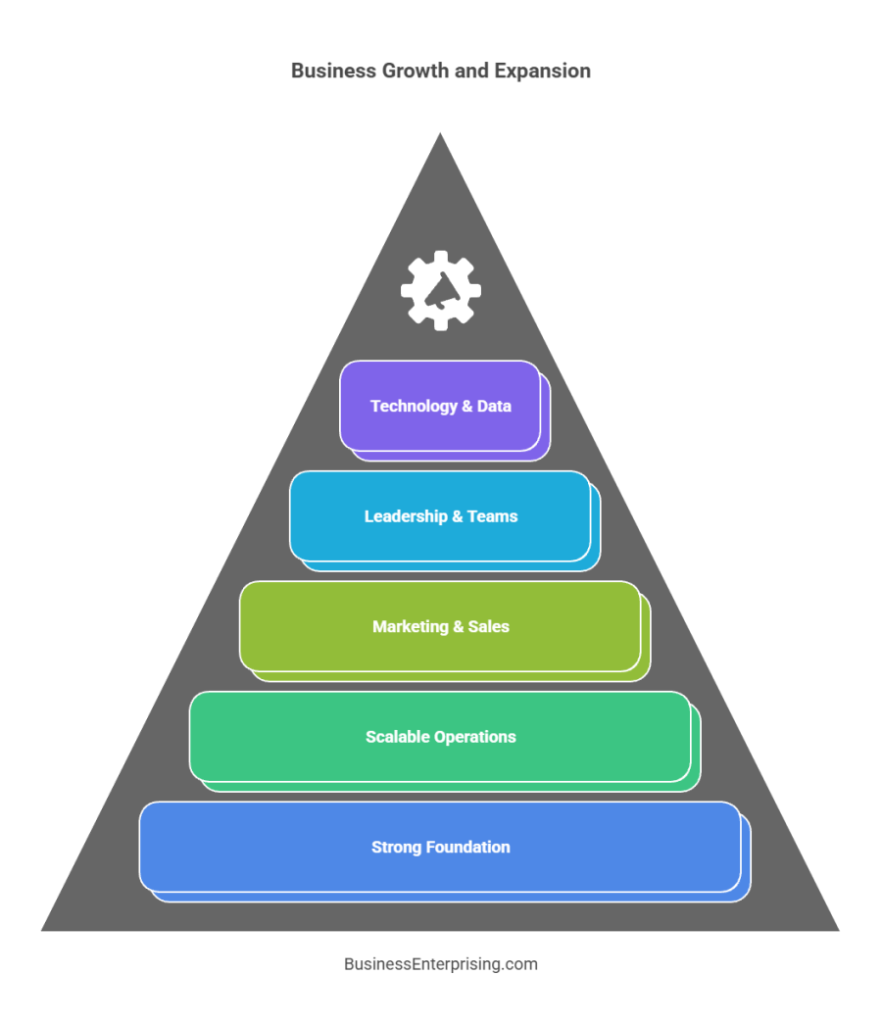 Growth requires more than hard work. It requires a strategy that supports expansion without losing stability. When you Learn How to Grow a Business, you discover that scaling is about building systems that adapt while maintaining consistency. However, many entrepreneurs move forward without preparation, which can create avoidable risks.
Growth requires more than hard work. It requires a strategy that supports expansion without losing stability. When you Learn How to Grow a Business, you discover that scaling is about building systems that adapt while maintaining consistency. However, many entrepreneurs move forward without preparation, which can create avoidable risks.
Before scaling, you need to examine the core areas of your business. Strong foundations in operations, finances, and management are essential. Therefore, reviewing your processes early helps you identify weaknesses before they become barriers. Additionally, improving these areas increases your ability to handle growth smoothly and predictably.
Marketing and sales are also central to sustainable expansion. Without a clear strategy, growth can stall quickly. Therefore, advanced tools such as sales funnels and targeted campaigns can provide steady momentum. Additionally, focusing on customer acquisition and retention builds long-term value that supports future scaling.
Leadership plays an equally important role. As your team grows, you need to provide clarity, guidance, and accountability. Therefore, building a strong culture and hiring effectively help you maintain performance. Additionally, empowering managers to lead keeps your company aligned during times of rapid change.
Technology and data complete the foundation for growth. Automated systems and analytics make scaling manageable while reducing unnecessary effort. Therefore, you gain insight to guide decisions and flexibility to adapt when markets shift. With the right preparation, you can scale in a way that feels structured rather than chaotic.
Strengthening Your Business Foundation
Before you think about scaling, you need to strengthen your foundation. Growth puts pressure on systems, processes, and finances. If these areas are weak, they will not support expansion. Therefore, reviewing your operations before scaling is one of the most important steps you can take.
Systems keep your business organized. When you grow, inefficiencies multiply and small issues turn into larger problems. Additionally, streamlined processes reduce mistakes and save time. Therefore, you should examine how work flows across departments. Fixing gaps now will prevent bigger disruptions later.
Financial stability is also a key part of growth readiness. Scaling requires investment, whether in staff, technology, or marketing. Therefore, you need clear financial records and a realistic understanding of cash flow. Additionally, having a strong handle on expenses and reserves gives you flexibility when opportunities arise.
Operational consistency is another important factor. As your business grows, you need structure that can handle more customers, employees, and demands. Therefore, standardizing practices now will make scaling smoother. Additionally, training your team on these practices builds confidence and accountability.
When you learn how to grow a business, you see that preparation makes scaling manageable. Strong foundations give you clarity and control. Therefore, you are better equipped to expand without losing stability. With solid systems, steady finances, and reliable processes, your business is ready for sustainable growth.
Developing Scalable Operations
Scalable operations are the backbone of sustainable growth. When your business expands, weak systems will slow progress and create problems. Therefore, building workflows, supply chains, and management structures that can handle growth is essential.
Workflows should be clear and repeatable. When tasks are organized, your team can work efficiently without confusion. Additionally, documenting each step reduces errors and makes training easier. Therefore, you should regularly review processes to identify bottlenecks. Small adjustments can create significant improvements over time.
Supply chains also need to support growth. If your suppliers cannot keep up, you risk delays and dissatisfied customers. Therefore, you should build relationships with reliable vendors who can scale with your needs. Additionally, diversifying suppliers can reduce the risk of disruption. Strong supply chain management creates stability during expansion.
Management structures are equally important. As your team grows, communication can become more complex. Therefore, you should establish clear reporting lines and defined responsibilities. Additionally, providing leadership training helps managers guide their teams effectively. Strong leadership keeps your culture intact while supporting growth.
When you learn how to grow a business, you realize scalable systems are not optional. They allow you to expand without losing consistency. Therefore, design operations that handle today’s demands while preparing for tomorrow’s opportunities. With strong workflows, reliable supply chains, and clear management, growth becomes steady and sustainable.
Expanding Marketing and Sales Strategies
Marketing and sales drive growth by attracting new customers and strengthening relationships with existing ones. If you want sustainable expansion, you need advanced strategies that scale with your goals. Therefore, expanding beyond basic methods becomes necessary as your business grows.
Digital marketing is one of the most effective ways to reach a larger audience. Paid ads, search visibility, and social media all create awareness. Additionally, using targeted campaigns helps you focus on the right customers instead of wasting resources. Therefore, building a clear digital strategy provides both reach and measurable results.
Sales funnels are equally important. A funnel guides prospects from initial interest to purchase. When designed well, it reduces friction and increases conversions. Additionally, tracking each stage of the funnel gives you valuable data about customer behavior. Therefore, you can refine messaging and improve results with consistency.
Customer acquisition strategies expand your reach even further. Partnerships, referrals, and content marketing are effective ways to bring in new clients. Additionally, analyzing performance helps you understand which methods generate the highest return. Therefore, you can double down on what works and adjust underperforming tactics.
When you learn how to grow a business, marketing and sales become central to long-term stability. These systems bring in revenue that supports scaling. Therefore, developing advanced strategies allows you to reach more people, close more deals, and keep customers returning.
Building and Leading Strong Teams
Strong teams drive business growth more effectively than any strategy or system. When your company expands, you need people who can adapt and perform. Therefore, leadership, hiring, and culture become critical parts of scaling.
Leadership sets the tone for everything. As the leader, your actions influence how others approach their work. Additionally, clear direction helps your team stay focused on priorities. Therefore, you should communicate openly and provide guidance that supports both short-term and long-term goals. Strong leadership creates stability during times of change.
Hiring is another foundation of growth. The right people bring new skills and energy to your company. However, hiring without purpose creates mismatched teams. Therefore, you should define roles clearly and look for individuals who align with your values. Additionally, strong onboarding and training help new employees contribute quickly.
Culture ties your team together as you scale. A positive culture fosters trust, collaboration, and accountability. Therefore, you should encourage open communication and recognize contributions. Additionally, maintaining your core values during growth helps your team feel connected. Culture is what keeps employees engaged when demands increase.
When you learn how to grow a business, you see that people are at the center of success. Processes and tools matter, but motivated teams bring plans to life. Therefore, invest time in leadership, hire thoughtfully, and build a culture that supports growth. With the right team, expansion becomes sustainable.
Exploring Funding for Growth
Funding growth requires careful planning. Expansion often demands more resources than your current operations can support. Therefore, you need to explore options that provide capital without creating unnecessary risk. When you consider loans, investors, or reinvested profits, you must evaluate how each path fits your goals.
Loans are a common way to access growth capital. They provide immediate funds but require repayment with interest. Therefore, you should calculate repayment terms carefully to avoid financial strain. Additionally, strong financial records and projections improve your chances of securing favorable terms from lenders.
Investors can also provide significant resources. However, working with investors often means giving up equity or decision-making power. Therefore, you should weigh whether the trade-off aligns with your vision. Additionally, investors may bring valuable expertise and connections, which can support growth beyond funding alone.
Reinvesting profits is another option. Using your own earnings avoids debt and maintains control. However, this method may slow expansion if profits are limited. Therefore, you need to balance patience with opportunity. Additionally, reinvestment works best when paired with clear financial planning.
When you learn how to grow a business, understanding funding options is essential. Each choice carries benefits and risks. Therefore, take time to analyze your situation, goals, and risk tolerance. With the right funding path, you can support growth while maintaining stability and long-term control.
Leveraging Data and Technology for Scale
Data and technology are key tools for scaling effectively. When your business grows, manual systems cannot keep pace with increased demand. Therefore, using analytics, automation, and digital platforms helps you operate smoothly and make smarter decisions.
Analytics provide valuable insights into your performance. By tracking sales, customer behavior, and expenses, you gain clarity about what drives results. Additionally, reviewing this data regularly helps you identify opportunities and address problems before they expand. Therefore, you can adjust strategies quickly and with confidence.
Automation reduces the strain of repetitive tasks. Whether it’s invoicing, customer follow-up, or inventory updates, technology saves time and increases accuracy. Additionally, automation frees your team to focus on higher-value work. Therefore, you gain both efficiency and better use of your resources.
Digital tools also support collaboration and organization. Project management software, cloud systems, and communication platforms keep teams aligned. Additionally, these tools make scaling easier by standardizing processes across larger groups. Therefore, your operations remain consistent as you expand.
When you learn how to grow a business, technology becomes more than a convenience. It becomes a foundation for sustainable growth. Data-driven insights, automation, and digital platforms give you control and flexibility. Therefore, leveraging these tools allows you to scale without losing quality or efficiency.
Conclusion
Scaling a business requires more than ambition. It requires structure, preparation, and consistent focus on the fundamentals that support growth. However, when you strengthen your foundation first, you create a platform that can handle expansion without breaking down.
Growth also demands scalable systems and clear leadership. Therefore, reviewing your operations, hiring carefully, and building a strong culture make your team more resilient. Additionally, marketing, sales, and funding strategies provide the momentum needed to keep progress steady. With the right approach, growth becomes a managed process rather than an unpredictable challenge.
Technology and data further improve your ability to expand. Analytics give you insight, while automation and digital tools reduce wasted effort. Therefore, you gain better control over decisions and performance. Additionally, this balance allows you to move quickly without losing consistency.
When you Learn How to Grow a Business, you see growth as a process that requires both discipline and adaptability. Education helps you understand the steps, risks, and opportunities ahead. Therefore, you can take confident actions that align with your goals. Additionally, you can adjust when conditions change while still moving forward.
Long-term success comes from building systems that scale, teams that perform, and strategies that sustain results. Therefore, focus on strengthening each area with intention. Growth is not about speed, but about direction and stability. With the right preparation, you can expand your business in a way that is both sustainable and rewarding.



